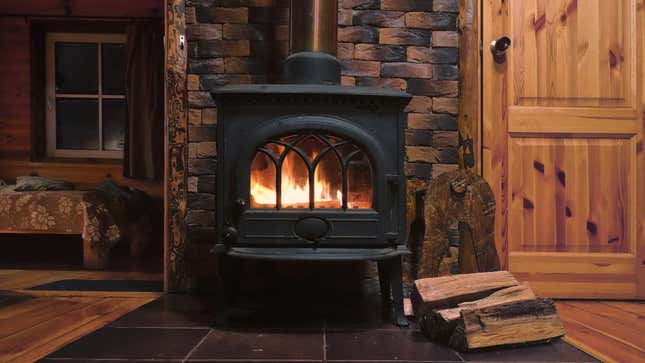
In the colder weather, especially when the days get shorter, lighting a fire indoors can be a cozy relief from the elements. If you have a wood stove, you could be using it as your primary or secondary source of heat, so keeping a fire burning is not only pleasant but necessary. But all that dry heat from the fire can dry out theair around you. And keeping the air from drying out isn’t just a matter of comfort—itcan also affect your health. According to theNational Institute of Health, the healthiest humidity levels are between 40 and 60%. Luckily, there are some simple ways to manage thehumidity in your home and keep your air healthy, whatever the weather outside.
Invest in a hygrometer
If you’re going for optimal humidity, getting ahygrometerto monitor your indoor humidity will help. While some HVAC systems have built-in hygrometer displays, not all units will have one. If your unit does have a hygrometer component, it might also have built-in humidifier/dehumidifier features. If that’s the case, then adding some steam into the mix is really more about comfort than health. However, if you’re using a fireplace or wood-burning stove as a regular heat source, chances are you don’t have built-in controls in your home, so using a hygrometer to measure indoor humidity is key.
Use a steamer
To add moisture to the air on a wood-burning stove, you can use asteam kettle. These come in a variety of styles from traditionaltea kettle shapestodragons,chickens, andbears(oh my). Set oneon the surface of the wood stove and usethe stove’s heat to evaporate the water into the air. There are alsopotsfor steaming that can be used to diffuse scent into the air byaddingherbs, citrus, oressential oil to your steam pot. If you have a fireplace, there’s no rule against keeping a steam kettle or pot on your regular kitchen stove while you’re alsousing the fireplace. Just make surethe pot doesn’t dry out and overheat.
Use your Instant Pot
You can use your Instant Pot as a steam-producing tool as well. Set your unit to high and wait until it pressurizes. Once that’s done, turn the setting to “keep warm” and open the steam valve. You can also take the lid off to allow more steam into the room. If you have a fireplace,this could be a safer way to create steam than a pot on the stove because there’s less chance for anaccident if it’s left unattended. Using this steam-producing method, you can also put aromatic herbs in the pot for a pleasant scent.
Use a traditional humidifier
如果你喜欢去一个更传统的路线,圣andard humidifier will work well. This is especially helpful if you don’t have a humidifier built into your HVAC. The National Institute of Health recommends using anevaporativeorsteamhumidifier becausecool mistmodels can spread allergens into the air. A humidifier will also often have settings like a timer and humidity settings that will allow you to automate the device, so if you want to set it and forget it, a humidifier is your best bet.
